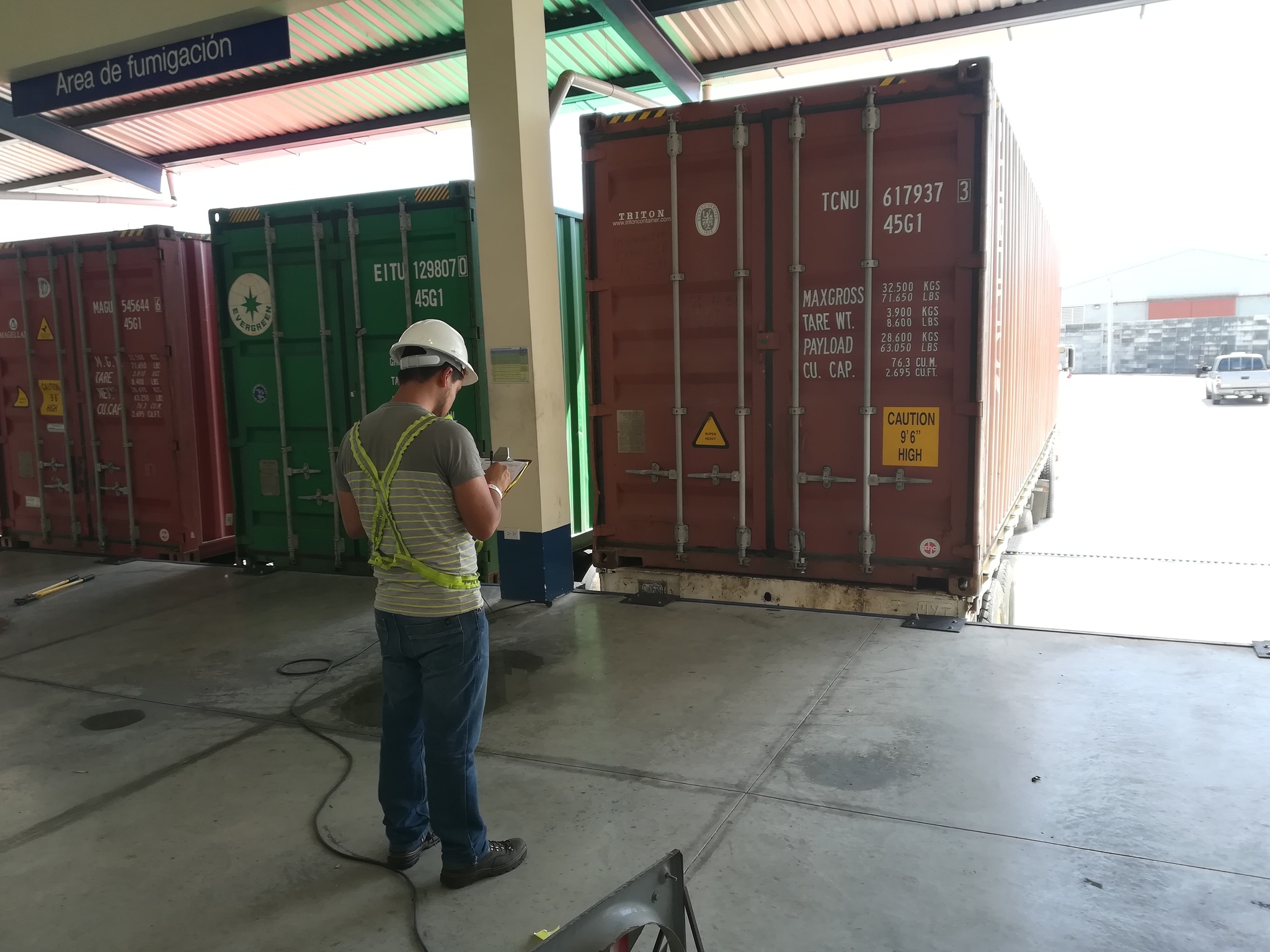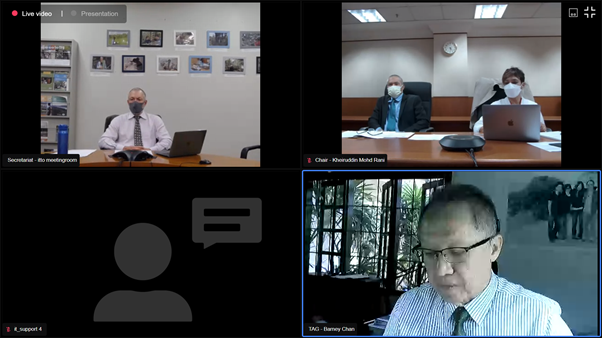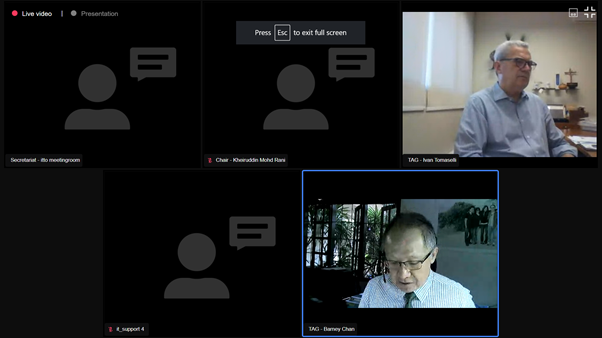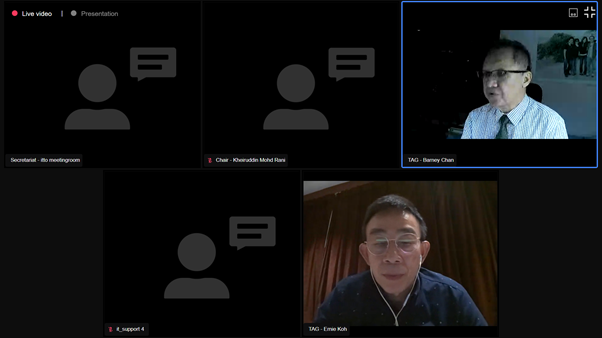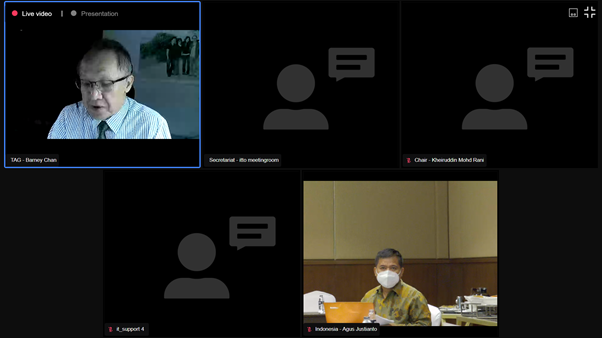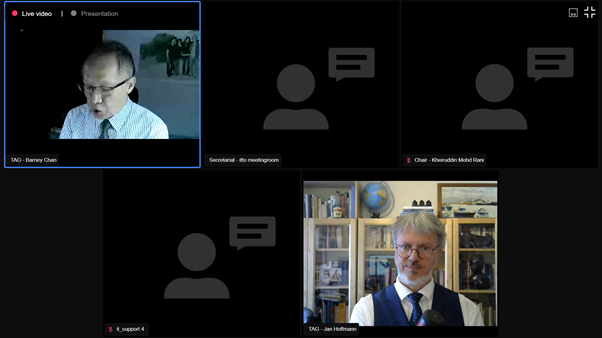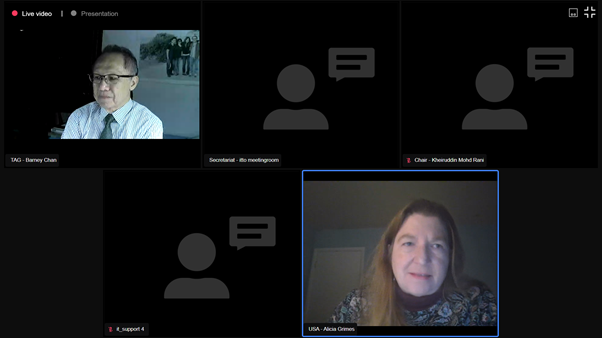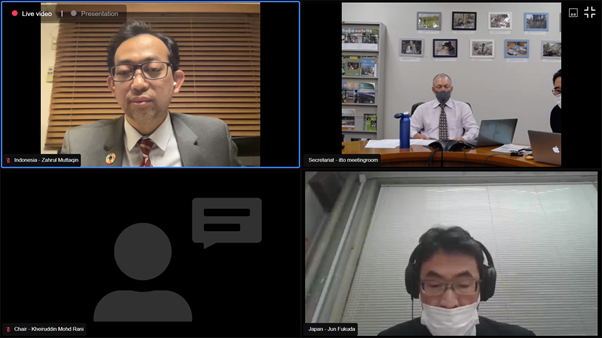Impacts of pandemic on tropical timber trade could be felt for years, say panellists at Annual Market Discussion
Wednesday 1 December 2021: The COVID-19 pandemic and the associated economic fallout has had major impacts on the tropical timber trade in all the major trading regions, with potentially long-term ramifications, according to speakers at the 2021 Annual Market Discussion, which took place during the 57th Session of the International Tropical Timber Council being convened virtually this week.
The event, which was organized by ITTO’s Trade Advisory Group, focused on challenges in tropical timber manufacturing and trade arising during the pandemic and explored the near-term outlook for the sector. It was open to the public and featured seven speakers from around the world.
The timber industry in Latin America has generally weathered the pandemic well in 2021 by the pandemic in 2021, with production ongoing and exports rising, according to Ivan Tomaselli, president of the consultancy firm STCP, based in Brazil. Many Latin American producers are heavily reliant on exports. However, said Professor Tomaselli, the industry is facing severe supply-chain issues, including the limited availability and very high costs of shipping containers (up to ten times pre-pandemic prices), stockpiling at ports and factories, and the cancellation of orders. Professor Tomaselli said he expected that COVID-19 would continue to be an issue in the region for the next 3–4 years, exacerbated by the slow roll-out of vaccinations in some countries.
Wu Shengfu at the China National Forest Products Industry Association said the pandemic has led to large increases in cost for Chinese wood product producers, including labour, materials, energy and shipping. These increases are being compounded by growing trade barriers and reduced communication between suppliers and buyers due to the pandemic. Dr Wu noted that most tropical countries now prohibit log exports, and obtaining sufficient raw materials is an increasing challenge for Chinese manufacturers. The pandemic has driven the development of “green” products for the domestic market, said Dr Wu, as well as technological innovations aimed at reducing energy consumption and increasing resource-use efficiency. He reported that, as part of the Belt and Road Initiative, the Yuwu–Europe Shuttle is now running more than 1000 trains per year between China and Europe; in 2020, for example, 1200 trains made the journey carrying 65 000 containers, with a vast array of products, including wood products.
Bradley A. McKinney, the Chief Executive Officer of the International Wood Products Association, said demand for imported wood products has been very high in North America in 2021, with many people working from home and others moving out of urban areas, leading to rises in home construction, repairs and remodelling. Mr McKinney said that the increase in economic activity has led to labour shortages and increases in wages, and the inflation rate is also the highest it’s been for more than 30 years. North American wood product importers are facing the same supply-chain challenges as other regions, said Mr McKinney, including a shortage of containers, low inventories and high costs, and he expected such disruptions to continue for some time.
Benoit Jobbé-Duval, the Managing Director of ATIBT, listed some of the long-term challenges facing the tropical timber industry in the Congo Basin, including a need to diversify harvested species, industrialize to promote lesser-used species, improve logistics, change tax systems, promote professional training, strengthen forest and industry research and increase access to financing. Mr Jobbé-Duval noted that governments in the subregion are increasingly restricting log exports with the aim of encouraging local processing, but this requires investment and training. He said new forest laws in the Congo and Gabon have introduced the concept of “shared production” based on similar arrangements in the oil sector, but how this will work in forestry remains to be seen. Mr Jobbé-Duval highlighted a ban on the use of tropical timber in construction associated with the 2024 Olympic Games in Paris as an example of tropical timber’s negative image in some markets and detailed the efforts his organization is making to improve communication and marketing with buyers and the public in Europe.
Reporting on developments in the furniture industry in the ASEAN region, Eddie Koh, chair of the ASEAN Furniture Industries Council, said there have been wild fluctuations over the course of the pandemic, including fears about impacts in the first half of 2020 followed by surging demand—and production costs—in the second half of that year. Furniture production ramped up further in early 2021, said Mr Koh, but problems with logistics—most notably soaring freight rates—meant that many factories were forced to fill warehouses with finished goods waiting for shipping containers. Production declined during lockdowns in some ASEAN countries in mid-2021, said Mr Koh, but is now increasing again.
He speculated that the pandemic could lead to the regionalization of furniture markets, with customers seeking to increase the resilience of their supply chains by sourcing more in their local regions. He also expected the current high demand for furniture to level off as people start travelling again and therefore have less money to spend on home improvements.
Sigit Pramono, from Indonesia’s Ministry of Environment and Forestry, presented on the country’s legality assurance system, SVLK, which is the product of 20 years of collaborative work. He reported that, as of October 2021, more than 5600 forest-based enterprises and nearly 30 million hectares of state production forests have been SVLK-certified. Moreover, since 2013, more than 1.5 million legality documents have been issued under the SVLK to support timber product exports worth USD 77.5 billion. Mr Pramono detailed interventions by the Government of Indonesia to assist the wood products industry during the pandemic, including the removal of a value-added tax on roundwood, a reduction on export tariffs for veneer, and the streamlining of bureaucratic procedures. Most timber exports declined in 2020 due to the pandemic, said Mr Pramono, but have recovered in 2021.
Jan Hoffman from the United Nations Conference on Trade and Development presented on recent trends in seaborne trade and enumerated six reasons why he expected freight rates to remain high for some time: 1) the pandemic is not yet over, and the need for social distancing and other controls inevitably means that ships need to spend more time in ports; 2) the shipping cycle, with fewer ships being built; 3) an ongoing process of consolidation among shipping lines and therefore a reduction in competition; 4) the need to decarbonize shipping, which implies increased costs during the transition phase; 5) the need for more ships if they move more slowly (to reduce greenhouse-gas emissions); and 6) an increase in risk premiums given uncertainties in the global regulatory environment, especially around emissions and the price of carbon. Mr Hoffman said simulations indicate that higher freight rates will affect consumers most in Small Island Developing States.
In the ensuing discussion, Jorge Malleux (Peru) said that the high cost of shipping and other logistical issues show the need for exporting countries to add value to their wood products and also to develop local markets. Mauro Rios (Peru) said it would be valuable to know which export products are being most affected by the current lack of shipping containers and high freight rates and suggested that this issue could be included in ITTO’s work in 2022. Alicia Grimes (USA) said that the speakers had outlined a wide range of government measures to address the challenges posed by the pandemic and it would be interesting to hear from the private sector on which of these have been most effective.
The presentations made at the 2021 Annual Market Discussion are available here.
“Harvesting timber is not deforestation”—Trade Advisory Group wants ITTO to spread the word
The Climate Change Conference (COP26) held recently in Glasgow should galvanize demand for sustainably produced tropical timber products rather than promulgate misconceptions about the role of the timber trade in deforestation, according to a statement delivered by Barney Chan on behalf of the Trade Advisory Group (TAG) in conjunction with ITTO’s 2021 Annual Market Discussion.
“We do not want the general public to take away the call for action in COP26 as to mean avoiding the use of tropical timber products,” said the statement. “We call upon ITTO, as the global leader working with the tropical forests and trade, to stand up and state very clearly that harvesting timber is not deforestation.”
The statement also addressed concern among TAG members about a proposed new regulation in the European Union on commodities and products associated with deforestation and forest degradation. It listed a range of concerns about the regulation and called on the European Union to engage with ITTO members and secretariat and national and international timber trade organizations to ensure that any proposal “is practical and workable on the ground”. TAG also called on ITTO to work with the European Union on the proposed regulation.
TAG was established in 2000 to provide inputs to ITTO’s policy and project work. It is open to anyone with an interest in the tropical timber trade, including representatives of tropical forest industries, timber exporters and importers, timber trade and industry consultants, and trade and industry associations.
The TAG statement is available here.
Committees review work on economics, statistics, markets and forest industry
The Committee on Economics, Statistics and Markets (CEM) and the Committee on Forest Industry (CFI) met jointly to review field and policy work on day 2 of the 57th Council session. Activities discussed included market access for tropical timber and tropical timber products; forest and timber certification; and market analysis under the FLEGT Independent Market Monitor. The presentations made to the joint sitting are available here.
The International Tropical Timber Council meets once a year to discuss a wide-ranging agenda aimed at promoting sustainable tropical forest management and the trade of sustainably produced tropical timber.
Daily coverage of the session by IISD reporting services is available at https://enb.iisd.org/ITTC57-International-Tropical-Timber-Council

